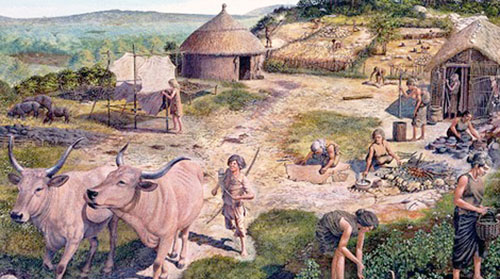Imagine a teenage girl, trying to figure out what to do with her life, reading up about sustainability.
That was how I discovered the PBs concept back in 2013. I was completing the Age of Sustainable Development, Professor Jeffery Sach's MOOC (Massive Open Online Course), which brought together many sustainability concepts that left an impression upon me, including the PBs.
So of course, being a teenage girl, I had to project my internal existential crisis onto the external planetary crisis, and decide that solving this crisis was to be my sens de la vie.
(The existing term MMORPG gave rise to the acronym MOOC.)
(Teenage girls also play too much computer games.)
(Teenage girls also play too much computer games.)
My interest in PBs resurfaced in the first lecture of this module.
In an effort to learn about PBs, I enrolled in the SDG Academy's Planetary Boundaries and Human Opportunities MOOC, presented by Professor Rockström himself. The SDG Academy is the online education initiative of the Sustainable Development Solutions Network of the UN.
My first impression of the MOOC was that it uses many words to explain something very simple. There was more focus on big picture ideas than explaining the actual PBs. There are also minor inaccuracies, such as when Rockström categorised atmospheric aerosol loading under a biosphere process although it should be an anthropogenic change. Nevertheless, it expands on the original papers in an engaging manner.
The MOOC begins by considering the challenge of sustainable development.
The modern thinking around sustainable development revolves around 3 main pillars: social, economic, and ecological. The PBs concept challenge this notion, putting forward evidence that sustainable development rests on the precondition that we are operating within safe, resilient life support systems. Thus, it persuades world leaders to prioritise the ecological aspect and become planetary stewards of human well-being.
The MOOC begins by considering the challenge of sustainable development.
The modern thinking around sustainable development revolves around 3 main pillars: social, economic, and ecological. The PBs concept challenge this notion, putting forward evidence that sustainable development rests on the precondition that we are operating within safe, resilient life support systems. Thus, it persuades world leaders to prioritise the ecological aspect and become planetary stewards of human well-being.
Earth is under pressure from a quadruple squeeze from Affluence and Population, the Climate Crisis, the Ecosystem Crisis, and "Surprise": the increasing risk of abrupt, unpredictable, and irreversible changes. The below diagram illustrates what, in contrast with self-regulating stability, an irreversible "tipping point" would look like. But what is this critical point?
The figure below shows the 18-Oxygen to 16-Oxygen isotopic ratio in the last 100,000 years.

A figure of the last glacial cycle of 18-O and selected events in human history. (Source: Ecology and Society)
Compared to other events in human history, characterised by frequent ups and downs, resulting in the labeled mass migrations, the current Holocene interglacial period that began 10,000 years ago has seen extraordinarily stable climate. This relatively stable environment allowed agriculture and complex societies, including the present, to develop and flourish. This is the stable, desirable state that we want to preserve.
(Source: ShortHistory)
What are the environmental processes that allow the Earth to remain in this stable state? Living in the Holocene, we have a good understanding of present biophysical conditions. In my next post, I will look into what environmental processes were chosen as PBs.









No comments:
Post a Comment